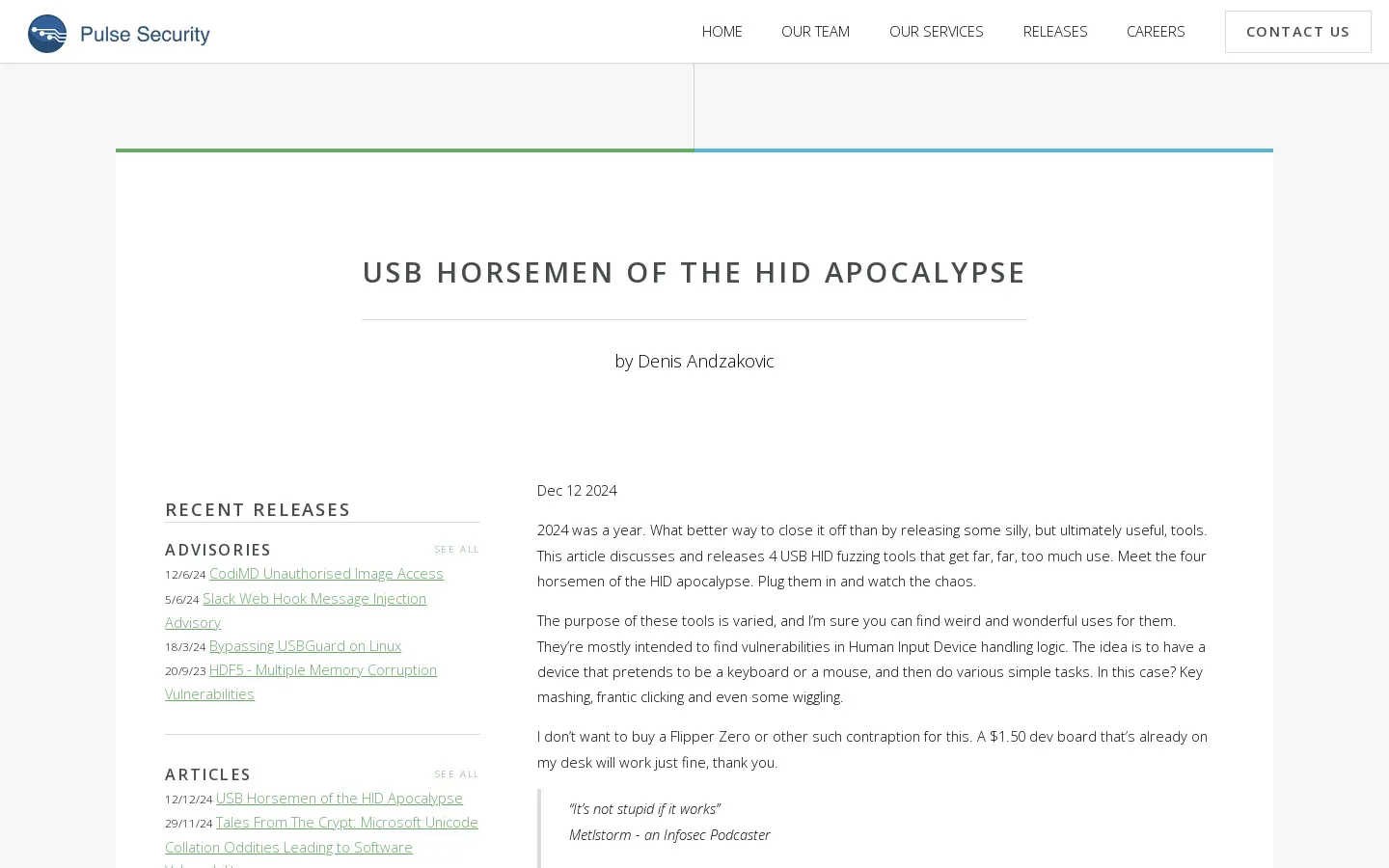
New USB HID Fuzzing Tools Enhance Cybersecurity Testing
/ 3 min read
Quick take - The article discusses the launch of four USB Human Interface Device fuzzing tools—ENTERCANNON, PROGAMER, RAGEQUITTER, and BAPHOMET—designed to identify vulnerabilities in input handling logic, emphasizing their development on accessible platforms and the importance of cautious implementation in security testing.
Fast Facts
-
Introduction of Tools: Four USB HID fuzzing tools—ENTERCANNON, PROGAMER, RAGEQUITTER, and BAPHOMET—aim to identify vulnerabilities in Human Interface Device handling logic.
-
Distinct Functions: Each tool has a unique purpose, such as simulating rapid key presses (ENTERCANNON) and erratic input patterns (RAGEQUITTER), enhancing comprehensive testing strategies.
-
Development Accessibility: Developed using the Arduino IDE, the tools are open-source and available on GitHub, allowing for easy modification and experimentation.
-
Testing Guidelines: Key recommendations include implementing a 5-second delay post-flashing, conducting tests in controlled environments, and experimenting with various input patterns to uncover vulnerabilities.
-
Cautionary Measures: Users must be cautious of potential disruptions to systems, avoid testing on live environments, and adhere to guidelines to prevent unintended consequences.
USB HID Fuzzing Tools: Unveiling the “Four Horsemen of the HID Apocalypse”
In a notable advancement for cybersecurity testing, four innovative USB Human Interface Device (HID) fuzzing tools have been introduced. Dubbed the “four horsemen of the HID apocalypse,” these tools—ENTERCANNON, PROGAMER, RAGEQUITTER, and BAPHOMET—are designed to identify vulnerabilities in Human Input Device handling logic. They operate on widely available development boards like the RP2040 and ESP32, marking a significant step in enhancing security assessments across various systems.
Overview of the Tools
Each tool within this suite serves a unique function, contributing to a comprehensive testing strategy:
-
ENTERCANNON: This tool simulates rapid key presses by mashing the enter key every 10 milliseconds. It is particularly effective in attacking pre-boot environments where conventional input handling may be vulnerable.
-
PROGAMER: While specific functionalities are not detailed, this tool is crafted to test input handling by simulating gaming-related interactions and behaviors.
-
RAGEQUITTER: Likely designed to simulate erratic input patterns, this tool aims to stress systems during testing.
-
BAPHOMET: Similar to its counterparts, BAPHOMET enhances the suite’s capability to uncover weaknesses in input handling logic.
Development and Implementation
The tools are developed using the Arduino IDE, which facilitates easy modifications and experimentation. The source code is accessible on GitHub, promoting collaboration within the security community. Users can tailor these tools to their specific needs by utilizing spare development boards that support USBHost, such as the RP2040 or ESP32.
Important Features and Guidelines
To maximize effectiveness and minimize risks when using these tools, several guidelines should be observed:
-
5-Second Delay: Implementing a 5-second delay after flashing the device allows safe disconnection before execution begins, preventing accidental disruptions.
-
Experimentation: Users should experiment with various input patterns, including key mashing and random mouse movements, crucial for uncovering potential vulnerabilities.
-
Controlled Environment: Testing should occur in controlled environments to prevent unintended consequences like crashes or unexpected system behavior on critical systems.
Cautionary Notes
While these tools offer powerful capabilities for identifying vulnerabilities, users must exercise caution:
-
Neglecting the 5-second delay: Failure to unplug the device after flashing can lead to unintended disruptions.
-
Underestimating Impact: Despite appearing benign, these tools can significantly disrupt system operations, potentially breaking mouse functionality or causing system crashes.
-
Testing on Live Systems: Conduct tests away from production environments to avoid detrimental effects on critical infrastructure.
The introduction of these USB HID fuzzing tools marks a significant step forward in security testing. By leveraging existing hardware and open-source resources, security professionals can enhance their methodologies and contribute to a more robust cybersecurity landscape. As these tools gain traction, their practical application in real-world security assessments will likely lead to improved defenses against potential threats.



